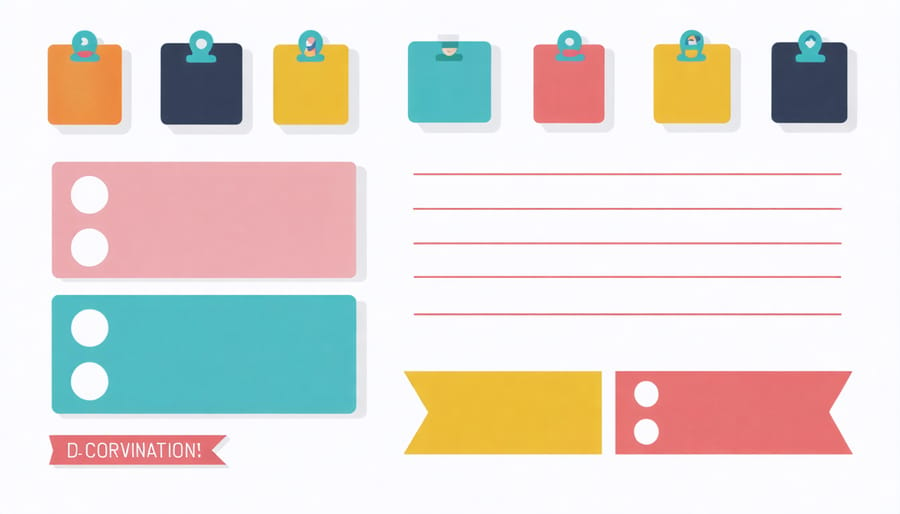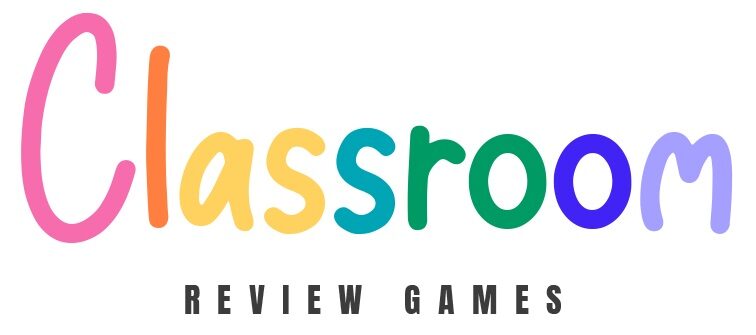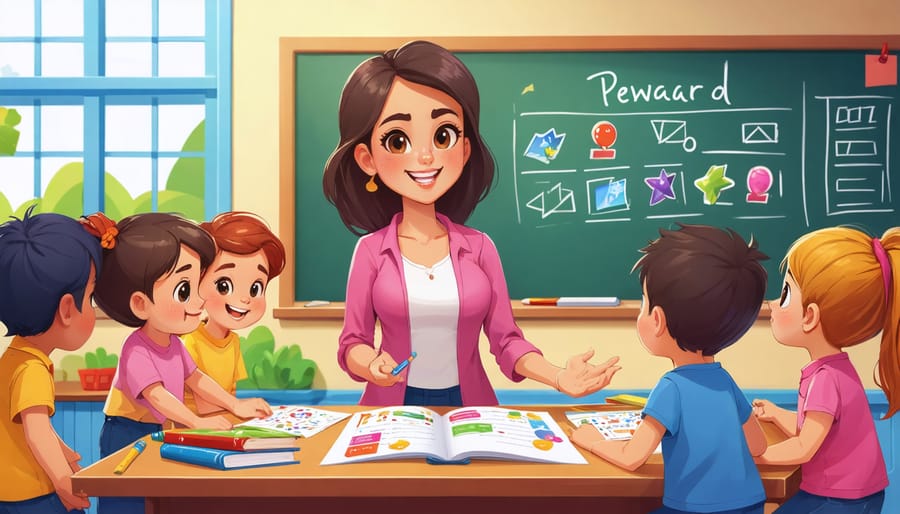Make Your Classroom Come Alive: Reinforcement Techniques That Actually Work
Transform your classroom dynamics with the power of reinforcement learning – a cornerstone of effective classroom management strategies that drives positive behavior and academic success. Whether you’re dealing with challenging behaviors or aiming to boost student engagement, understanding the four types of reinforcement (positive, negative, extinction, and punishment) equips you with essential tools to shape student conduct.
Think of reinforcement as your teaching superpower – it’s not just about rewards and consequences, but about creating an environment where students naturally gravitate toward productive behaviors. From simple praise to structured reward systems, these techniques work because they tap into fundamental principles of human motivation and learning.
Ready to discover how each type of reinforcement can revolutionize your teaching approach? Let’s explore practical, classroom-tested examples that you can implement tomorrow morning to create a more positive, productive learning space for every student in your care.
Positive Reinforcement: Building Confidence Through Praise
Verbal and Written Recognition
Verbal and written recognition are powerful tools that can significantly impact student behavior and motivation. Simple phrases like “Great job!” or “I’m proud of how hard you worked” can make a lasting impression when delivered with genuine enthusiasm. Consider writing personalized notes on assignments, such as “Your creativity really shines in this project!” or “I noticed how you helped your classmate – that was very kind!”
Create a recognition board where you post student achievements, both academic and behavioral. This could include “Star Student of the Week” or “Kindness Champion” highlights. Digital recognition through class communication apps or email updates to parents can also reinforce positive behaviors.
Remember to be specific with your praise. Instead of just saying “good work,” try “I love how you showed your mathematical thinking step by step” or “Your vocabulary choices made your story come alive!” This helps students understand exactly what they did well and encourages them to repeat these behaviors.
Make recognition immediate and consistent. A quick thumbs-up, a positive note in their planner, or a brief mention during morning announcements can all serve as effective verbal and written reinforcements that build confidence and motivation.

Reward Systems and Point Games
Points and reward systems are fantastic tools to boost student engagement while reinforcing positive behaviors. Create a simple point system where students earn tokens, stickers, or digital badges for meeting behavioral and academic goals. Try implementing “Class Dojo” or a similar digital platform to track points visually and keep students motivated.
Make it fun by turning point collection into engaging games! Set up “Team Challenges” where small groups compete to earn points through good behavior, completed assignments, or helping classmates. Consider creating a classroom store where students can “spend” their earned points on special privileges like choosing their seat for a day or being the class helper.
Remember to keep the system fair and achievable for all students. Set clear expectations for how points are earned and lost, and celebrate milestones as a class. Mix individual and group rewards to promote both personal responsibility and teamwork. The key is consistency and enthusiasm – when you’re excited about the system, your students will be too!

Negative Reinforcement: Encouraging Positive Behavior
Reducing Homework Load
Reducing homework load can be a powerful motivator for students when used strategically. Consider offering a “homework pass” for students who consistently complete their assignments on time or show significant improvement in their work quality. You might reduce Friday’s homework for students who maintain good behavior throughout the week, or offer a “half-homework” option for those who demonstrate mastery of concepts during class time.
Create a points system where students can earn homework reductions through active class participation, helping peers, or showing academic progress. For instance, collecting five “participation stars” could earn one homework-free evening. Remember to keep the system fair and achievable for all students.
Be sure to communicate clear guidelines about when and how homework reductions are earned. This helps maintain the incentive’s effectiveness while ensuring educational goals aren’t compromised. For younger students, consider using a visual chart to track progress toward homework reduction rewards, making the system more engaging and transparent.
Earned Privileges
Earned privileges are a fantastic way to reinforce positive behavior in your classroom while teaching students about responsibility and consequences. Think of these as special rewards that students can unlock through consistent good behavior. For example, you might allow students who complete their homework on time for a week to choose their seats or become the class helper.
Popular earned privileges include extra computer time, being first in line for recess, choosing a classroom job, or earning “free time” minutes. You can create a privilege menu where students can select their rewards, making the system more engaging and personalized. This approach works especially well with older elementary and middle school students who appreciate having choices and responsibility.
Remember to keep privileges achievable and meaningful to your specific class. What works as a privilege for one group might not excite another, so don’t hesitate to adjust based on your students’ interests and age level.
Positive Punishment: Setting Clear Boundaries
Time-Out Techniques
Time-outs can be a valuable teaching tool when implemented thoughtfully and consistently. Start by designating a specific quiet area in your classroom – this could be a cozy corner with pillows or a simple desk facing away from activities. The key is making it a space for reflection, not punishment.
For younger students, use the one-minute-per-age rule (a 6-year-old gets 6 minutes), while older students might benefit from 10-15 minute reflection periods. Always explain why the time-out is happening and what behavior needs changing. Keep your tone calm and matter-of-fact.
During the time-out, provide students with a reflection sheet to help them process their actions and plan better choices. Once the time-out ends, have a brief, positive conversation about moving forward. Remember, the goal is to help students learn from their mistakes, not to shame them.
Consider using a visual timer to help students understand how long they’ll be in time-out, and always end with encouragement for better choices next time.

Additional Assignments
Additional assignments can be a powerful form of positive reinforcement when framed correctly. Instead of using extra work as punishment, present it as an opportunity for students to showcase their abilities and earn recognition. For example, offer high-achieving students the chance to create a class presentation on their favorite topic, or let them lead a mini-lesson for their peers.
Create special project opportunities that align with students’ interests, like designing a classroom bulletin board, organizing a class event, or developing a creative writing piece. These assignments should feel like privileges rather than burdens. The key is to ensure the extra work is engaging and allows students to demonstrate their skills in new ways.
Remember to match the assignment difficulty to the student’s ability level and always acknowledge their effort with specific praise. This approach helps students associate additional work with growth and achievement rather than punishment.
Negative Punishment: Natural Consequences
Loss of Privileges
Loss of privileges, when used thoughtfully, can be an effective classroom management tool. The key is to remove privileges temporarily and with clear communication about how students can earn them back. For example, you might restrict free choice time, computer usage, or preferred seating arrangements. Always explain the connection between the behavior and the lost privilege, keeping the duration reasonable and age-appropriate.
Remember to focus on specific privileges rather than essential learning opportunities. Instead of removing recess (which students need for physical activity and social development), consider limiting preferred activities like being the line leader or using special classroom materials.
Make sure to establish a clear path for students to regain privileges through positive behavior. This helps maintain motivation and shows students that their actions directly influence their classroom experience. Keep the tone constructive rather than punitive, and celebrate when students successfully earn their privileges back.
Group Activity Exclusion
Activity exclusion can be an effective classroom management tool when used appropriately. This involves temporarily removing a student from a preferred group activity as a consequence of disruptive behavior. For example, if a student consistently interrupts during group reading time, they might sit at a separate desk for five minutes before rejoining the group.
Remember to keep exclusion periods brief – typically 2-5 minutes for younger students and 5-10 minutes for older ones. Always explain clearly why the exclusion is happening and what behavior needs to change. The goal isn’t punishment but helping students understand the connection between their actions and consequences.
Make sure to welcome students back to the group positively once they’re ready to participate appropriately. This reinforces that it’s the behavior, not the student, that needed adjustment. Never use activity exclusion for extended periods or as a first response to minor infractions.
As we’ve explored, implementing the four types of reinforcement – positive, negative, token, and social – can transform your classroom management approach and boost student engagement. Remember, the key to success lies in consistency and personalization. Start small by choosing one type of reinforcement that best fits your teaching style and classroom dynamics, then gradually incorporate others as you become more comfortable.
Keep track of what works best for different students and situations, as reinforcement strategies aren’t one-size-fits-all. Mix and match these approaches to create a dynamic learning environment that motivates all types of learners. Consider creating a simple chart to monitor effectiveness and adjust your strategies accordingly.
Most importantly, maintain authenticity in your approach. Students can tell when praise and reinforcement are genuine, so let your enthusiasm for their progress shine through! Whether you’re using sticker charts, extra break time, verbal praise, or a combination of methods, stay flexible and open to adapting your approach based on student responses.
Remember, the goal is to foster a positive learning environment where students feel motivated, supported, and eager to participate in their educational journey.


